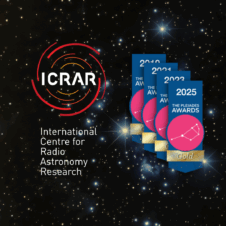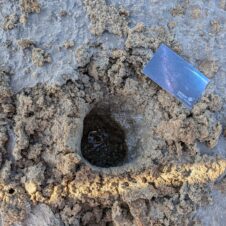Astronomers have used an Australian radio telescope to observe molecular signatures from stars, gas and dust in our galaxy, which could lead to the detection of complex molecules that are precursors to life.
Using the Murchison Widefield Array (MWA), a radio telescope located in the Murchison region of Western Australia, the team successfully detected two molecules called the mercapto radical (SH) and nitric oxide (NO).
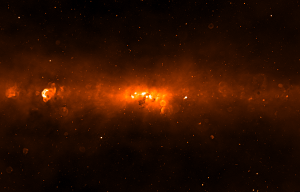
This image shows the centre of the Milky Way as seen by the Galactic Centre Molecular Line Survey. Credit: Chenoa Tremblay (ICRAR-Curtin)
“The molecular transitions we saw are from slow variable stars—stars at the end of their lives that are becoming unstable,” said Chenoa Tremblay from the International Centre for Radio Astronomy Research (ICRAR) and Curtin University.
“We use molecules to probe the Milky Way, to better understand the chemical and physical environments of stars, gas and dust,” she said.
“One of the unique aspects of this survey is that until now, no one has ever reported detections of molecules within the 70-300MHz frequency range of the MWA and this is the widest field-of-view molecular survey of the Milky Way ever published.”
Since the 1980s, frequencies greater than 80GHz have been used for this type of work due to the freedom from radio frequency interference emitted by our mobile phones, televisions and orbiting satellites. But the extreme “radio quietness” of the Murchison Radio-astronomy Observatory, where the telescope is located, allows astronomers to study molecular signatures from stars and star-forming regions at lower frequencies.
“Before this study, the mercapto radical had only been seen twice before at infrared wavelengths, in a different part of the electromagnetic spectrum,” said Dr Maria Cunningham from the University of New South Wales.
“This shows that molecules are emitting photons detectable around 100MHz and we can detect these molecular signatures using the MWA—it’s very exciting for us,” she said.
Following on from the pilot study, a survey of the Orion region is now in progress, again using the MWA, in the frequency range of 99-270MHz. The Orion nebula is a chemical-rich environment and one of the closest star-forming regions to Earth. The aim is to detect more chemical tracers in stars, compare these regions to the observations from the Galactic Centre pilot region and to better understand the emission mechanisms of these molecules.
“This new technique paves the way for deeper surveys that can probe the Milky Way and other galaxies in search of molecular precursors to life,” said Tremblay.
“We might even discover signatures from long chain amino acids in the cold gas environments we’re observing—which is where they are likely to be most stable.”
PUBLICATION DETAILS
‘A First Look for Molecules between 103 and 133MHz using the Murchison Wide eld Array’, published in the Monthly Notices of the Royal Astronomical Society on July 21, 2017.
Click here for the research paper
MORE INFORMATION
The MWA
The Murchison Widefield Array (MWA) is a low frequency radio telescope located at the Murchison Radio-astronomy Observatory in Western Australia’s Mid West. The MWA observes radio waves with frequencies between 70 and 320 MHz and was the first of the three Square Kilometre Array (SKA) precursors to be completed.
The SKA
Co-located primarily in South Africa and Western Australia, the SKA will be a collection of hundreds of thousands of radio antennas with a combined collecting area equivalent to approximately one million square metres, or one square kilometre.
ICRAR
The International Centre for Radio Astronomy Research, or ICRAR, is a joint venture between Curtin University and The University of Western Australia with support and funding from the State Government of Western Australia.
CAASTRO
CAASTRO is a collaboration of The University of Sydney, The Australian National University, The University of Melbourne, Swinburne University of Technology, The University of Queensland, The University of Western Australia and Curtin University. It is funded under the Australian Research Council (ARC) Centre of Excellence program, with additional funding from the seven participating universities and from the NSW State Government’s Science Leveraging Fund.
MULTIMEDIA
Image: The centre of the Milky Way at radio wavelengths
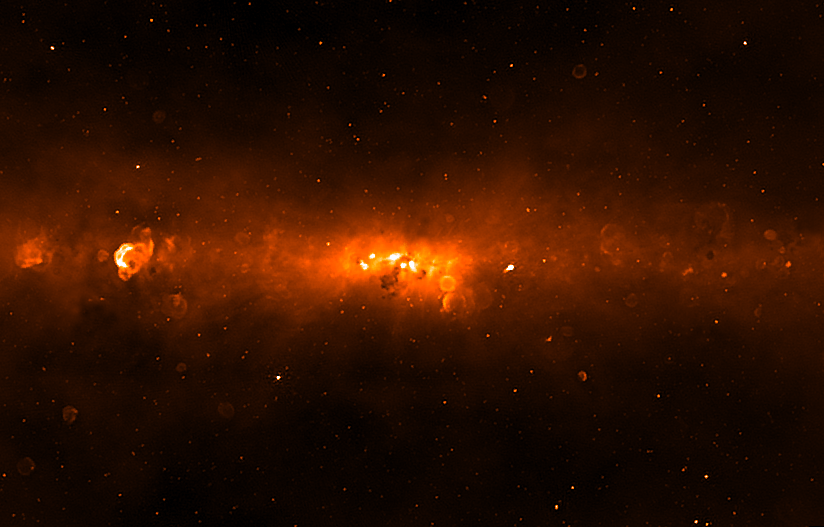
This image shows the centre of the Milky Way as seen by the Galactic Centre Molecular Line Survey. Credit: Chenoa Tremblay (ICRAR-Curtin)
Image: The centre of the Milky Way with organic and inorganic molecules inset
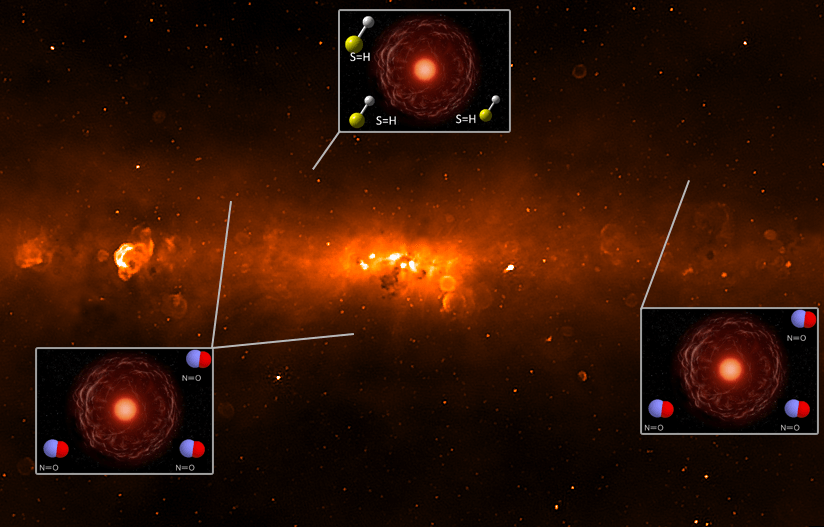
This image shows the centre of the Milky Way as seen by the Galactic Centre Molecular Line Survey. This probes deep into the centre of the galaxy and is sensitive to many organic and inorganic molecules such as the mercapto radical (SH) and nitric oxide (NO). Credit: Chenoa Tremblay (ICRAR-Curtin)
Image: The Murchison Widefield Array Radio Telescope

